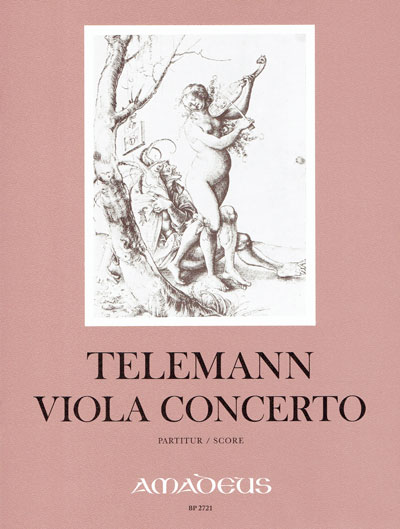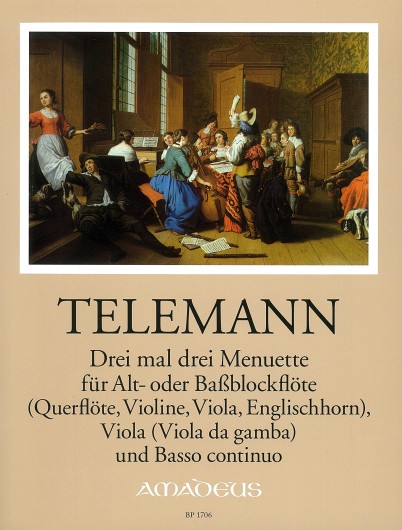
Hermann Ritter and his Viola alta |
by Carl Smith
(Violist in the Grazer Philharmonic Orchestra, since 1978)
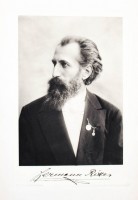 Hermann Ritter, not much of a talk today, was one of the most renowned and influential personas in the history of viola. Lionel Tertis is considered the first viola soloist in time. However Ritter had already been an internationally renowned soloist by 1875. The indeed accomplished Tertis was only part of the third generation of viola soloists, since Ritter's student, Michael Balling also was a famous soloist. Even though it hasn't been documented, it can be assumed that Tertis had listened to Ritter and Balling in concert, quoting "…listening to other soloists makes an important part of one's personal studies."
Hermann Ritter, not much of a talk today, was one of the most renowned and influential personas in the history of viola. Lionel Tertis is considered the first viola soloist in time. However Ritter had already been an internationally renowned soloist by 1875. The indeed accomplished Tertis was only part of the third generation of viola soloists, since Ritter's student, Michael Balling also was a famous soloist. Even though it hasn't been documented, it can be assumed that Tertis had listened to Ritter and Balling in concert, quoting "…listening to other soloists makes an important part of one's personal studies."Hermann Gottlieb Carl Ludwig Ritter was born on the 16th of September 1849, by the Baltic Sea, in Wismar, Mecklenburg. Music had played an important role in his childhood already. The beautiful choir chants in the castle church in Schwerin is documented as part of his first memorable experiences during his childhood. Ritter joined the castle choir as an alto. The "alto part" would mark his destiny. Soon thereafter, Ritter realized that he could only be truly happy making music. He then had to choose an instrument. It was an obvious choice; what could possibly be a closer bet for a young vocalist than a string instrument? He picked up the violin and began his music education. In 1865 he enrolled at the "Neue Akademie der Tonkunst" in Berlin, later on at the "Hochschule für Musik" under Joseph Joachim, whom he studied violin with.
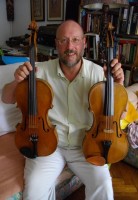 After graduating from his music studies in 1870, he joined the court theater chapel ensemble at Schwerin, where he performed as a violinist for 2 years. After fulfilling his one-year-long military service in Rostock, he moved to Heidelberg, having been called for the role of the city music director. However this role didn't match his expectations, and he soon enrolled at the Heidelberg University, studying history of philosophy and musicology. Thereafter he completely dedicated himself to musicology. During his studies he made a living as a teacher, playing the alto viola for joy every now and then. This was the time when he decided to intensively study the viola, with the goal to make it sound "tonally" equal to the violin and violoncello. He asked himself: "Why is this instrument, given its naturally suitable register for musical expression, not being frequently used as an independent "player" in music? He found the cause to be part of the instrument's construction. Looking for an answer, he studied the history of the evolution of string instruments with sources, as well as the process of violin making. He then wrote down his findings in a book, which was published in Heidelberg in 1876.
After graduating from his music studies in 1870, he joined the court theater chapel ensemble at Schwerin, where he performed as a violinist for 2 years. After fulfilling his one-year-long military service in Rostock, he moved to Heidelberg, having been called for the role of the city music director. However this role didn't match his expectations, and he soon enrolled at the Heidelberg University, studying history of philosophy and musicology. Thereafter he completely dedicated himself to musicology. During his studies he made a living as a teacher, playing the alto viola for joy every now and then. This was the time when he decided to intensively study the viola, with the goal to make it sound "tonally" equal to the violin and violoncello. He asked himself: "Why is this instrument, given its naturally suitable register for musical expression, not being frequently used as an independent "player" in music? He found the cause to be part of the instrument's construction. Looking for an answer, he studied the history of the evolution of string instruments with sources, as well as the process of violin making. He then wrote down his findings in a book, which was published in Heidelberg in 1876.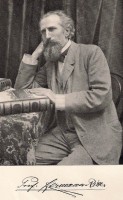 Ritter wasn't the first one to research the so called "viola problem". In 1843, Berlioz dedicated a chapter in his book "Instrumentationslehre" to the viola, commenting: "It needs to be mentioned that most violas in today's French orchestras aren't built with the necessary quality standards in mind. They don't have the size, and neither, artistically speaking, the sound quality of a real viola. They are most often violins, equipped with viola strings. The music directors should forbid use of these bastardized instruments, whose tone robs one of the most interesting orchestral parts of its color and power, especially in the lower registers. The violists were always recruited by the board of violinists. If a musician was unable to fulfill the standards of a violin player, he was called to play the viola part instead. That's why violists back in time weren't able to play either violin or viola. I admit that this prejudice against the viola part is still existing today, with even the best orchestras employing violists who know as little about the violin as they do about the viola. However the "inconvenience" resulting from the acceptance of bad players is being increasingly acknowledged, and thus the viola being entrusted more and more to skilled hands. Out of all the orchestral instruments, the viola's distinct characteristics had gone unrecognized for the longest. It is just as agile as the violin, with its lowest strings sounding particularly strong, while the higher registers conveys painful passion at it's finest. The viola's generally melancholic character makes it seemingly distinct from the other string instruments." • 1)
Ritter wasn't the first one to research the so called "viola problem". In 1843, Berlioz dedicated a chapter in his book "Instrumentationslehre" to the viola, commenting: "It needs to be mentioned that most violas in today's French orchestras aren't built with the necessary quality standards in mind. They don't have the size, and neither, artistically speaking, the sound quality of a real viola. They are most often violins, equipped with viola strings. The music directors should forbid use of these bastardized instruments, whose tone robs one of the most interesting orchestral parts of its color and power, especially in the lower registers. The violists were always recruited by the board of violinists. If a musician was unable to fulfill the standards of a violin player, he was called to play the viola part instead. That's why violists back in time weren't able to play either violin or viola. I admit that this prejudice against the viola part is still existing today, with even the best orchestras employing violists who know as little about the violin as they do about the viola. However the "inconvenience" resulting from the acceptance of bad players is being increasingly acknowledged, and thus the viola being entrusted more and more to skilled hands. Out of all the orchestral instruments, the viola's distinct characteristics had gone unrecognized for the longest. It is just as agile as the violin, with its lowest strings sounding particularly strong, while the higher registers conveys painful passion at it's finest. The viola's generally melancholic character makes it seemingly distinct from the other string instruments." • 1)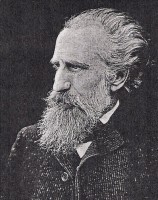 During his studies on the history of the evolution of string instruments, Ritter found an examination by Antonio Bagatella: "Geometric rules for violinmaking", which appeared in Padua in 1782. Bagatella bases his theory on a specific geometric plan. With the plan serving as a basis, Ritter developed his "viola alta", together with violin maker Karl Adam Hörlein from Wüzburg. Ritter published his ideas in relation to improvements of the viola alta in his book "Die Geschichte der viola alta und die Grundprinzipien ihres Baues". Ritter based his theory as follows: The viola's size compared to the violin is a fifth lower. The mathematical proportion is thus 3:2, between dominant and base tone. This is why a violin with a body length of 36 cm is perfectly proportionate to a viola of 54 cm body length. Naturally, the latter size would be impossible to play under the chin. That's why Ritter used Stradivari's conversion ratio of 4:3. The resulting length of 48 cm came to use with Ritter's new instrument, which he had custom made by an expert. According to the theory of Bagatella, a viola alta could be built smaller (just as most of them were made), and still keep its harmonic character. Nonetheless, a certain size is necessary for the viola alta's character, as Berlioz describes in his book. It is however more than just the instrument's size, contributing to the viola alta's charater. The use of geometrical principles certainly plays its part.
During his studies on the history of the evolution of string instruments, Ritter found an examination by Antonio Bagatella: "Geometric rules for violinmaking", which appeared in Padua in 1782. Bagatella bases his theory on a specific geometric plan. With the plan serving as a basis, Ritter developed his "viola alta", together with violin maker Karl Adam Hörlein from Wüzburg. Ritter published his ideas in relation to improvements of the viola alta in his book "Die Geschichte der viola alta und die Grundprinzipien ihres Baues". Ritter based his theory as follows: The viola's size compared to the violin is a fifth lower. The mathematical proportion is thus 3:2, between dominant and base tone. This is why a violin with a body length of 36 cm is perfectly proportionate to a viola of 54 cm body length. Naturally, the latter size would be impossible to play under the chin. That's why Ritter used Stradivari's conversion ratio of 4:3. The resulting length of 48 cm came to use with Ritter's new instrument, which he had custom made by an expert. According to the theory of Bagatella, a viola alta could be built smaller (just as most of them were made), and still keep its harmonic character. Nonetheless, a certain size is necessary for the viola alta's character, as Berlioz describes in his book. It is however more than just the instrument's size, contributing to the viola alta's charater. The use of geometrical principles certainly plays its part.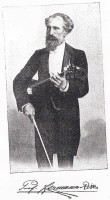 In February 1876, Ritter met Richard Wagner in "Haus Wahnfried" in Bayreuth, where Ritter presented his new viola alta, playing the song "Lied an den Abendstern" from "Tannhäuser". Wagner, pointing towards Ritter's viola alta, said: "The right alto instrument!" Wagner had always been on the lookout for new instrumental colors, especially in the mid register. He immediately hired Ritter as solo violist at Bayreuth's Festival Orchestra. In 1889, five of Hermann Ritter's students, whom he trained at the music school in Würzburg, performed at Bayreuth's Bühnenfestspiel alone.
In February 1876, Ritter met Richard Wagner in "Haus Wahnfried" in Bayreuth, where Ritter presented his new viola alta, playing the song "Lied an den Abendstern" from "Tannhäuser". Wagner, pointing towards Ritter's viola alta, said: "The right alto instrument!" Wagner had always been on the lookout for new instrumental colors, especially in the mid register. He immediately hired Ritter as solo violist at Bayreuth's Festival Orchestra. In 1889, five of Hermann Ritter's students, whom he trained at the music school in Würzburg, performed at Bayreuth's Bühnenfestspiel alone.Ritter had many students, who again trained other violists. The viola alta used to be much better known than today. It even influenced a generation of composers, who had in mind this particular sound. Works were composed either for Ritter personally, or for the viola alta. Many works from this time are not known anymore, the two main reasons being: The "Neudeutsche Schule", struggled beating its path. These works had also been intended for the viola alta. A small "alto" viola does not resemble the intended character. Composer Felix Draeseke, composer of two sonatas specifically for viola alta, confirms this statement. The first work known to me, which was dedicated to Ritter is the sonata by Max Meyer-Olbersleben from Weimar. He was the director of the Würzburger Musikschule from 1907 - 1920. The sonata is an invaluable piece for the viola music repertoire. Another work dedicated to Hermann Ritter is the "Romance oubliée" by Franz Liszt. He had written the original piece earlier, then arranged it for Hermann Ritter and his viola alta in 1881. Ritter added a second cadenza part with repeating arpeggios, after Berlioz' "Harald in Italian". The composer and pedagogue Hans Sitt, born in 1850, dedicated his "Drei Fantasiestücke" to Hermann Ritter.
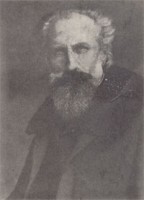 Now why did the viola alta not make the race, and why is it not being played anymore today? The answer lies in the same conclusion made in the Baroque epoch. Most violists naturally start playing violin, then change to the viola later. Many teachers are violinists as well. It is important to mention that viola technique does NOT equal violin technique. I keep hearing statements such as "they are tall and have long arms". I dare saying, except for very small people, most violists play a 44, or even 45 cm viola, including women. It naturally takes more than a day to learn!
Now why did the viola alta not make the race, and why is it not being played anymore today? The answer lies in the same conclusion made in the Baroque epoch. Most violists naturally start playing violin, then change to the viola later. Many teachers are violinists as well. It is important to mention that viola technique does NOT equal violin technique. I keep hearing statements such as "they are tall and have long arms". I dare saying, except for very small people, most violists play a 44, or even 45 cm viola, including women. It naturally takes more than a day to learn!Ritter on the viola's character: "All string instruments are defined by the human nature, with human voices in mind. One can't expect string instruments to play passages contradicting their very nature. I don't see the viola alta player as a virtuoso in the traditional sense. It is neither the brightly flickering, rapid, nor the artfully crafted and sophisticated passages that make the main part of his performance. It is the lyrical and fully sounding chant in all dynamics, reaching from piano to forte. The performer shouldn't play with the objective to impress the audience; however he may aim for reverence and emotional satisfaction. His performance shall always be an extension of his deep and magnani
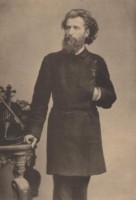 mous soul." Ritter justifiably said, "it is indeed wrong to expect a traditional nasal tone from the viola."
mous soul." Ritter justifiably said, "it is indeed wrong to expect a traditional nasal tone from the viola."Ritter became a professor at the royal music school in Würzburg in 1879. This is where he trained many violists on his viola alta. The prince of his closely related fatherland, grand duke Friedrich Franz von Mecklenburg-Schwerin, appointed Ritter as a chamber virtuoso. King Ludwig II from Bayern awarded him the title of "Royal Professor".
Ritter died in Würzburg in 1926, where he was laid to rest. His invaluable personality then slowly transcended into the lesser known parts of history. The remaining location of his 48 cm viola alta is unknown.
Sources:
• Quotes from publications by Hermann Ritter
• Hermann Ritter and his viola alta - collected essays by E. Adema
• 1) Hector Berlioz: Grande Traité d'Instrumentation et d'Orchestration
Read the whole presentation by Carl Smith
This blog article is an excerpt of a presentation on Hermann Ritter, held by Carl Smith in Markneukirchen. You can order the complete presentation as a PDF for free here.
Links
• Tarentella by Hermann Ritter Op.37 No.5 played by Spencer Hunt, Mvt.3: https://www.youtube.com
• Souvenir des Alpes by Hermann Ritter, original recording: https://www.youtube.com/watch
• Hermann Ritter on Wikipedia: https://de.wikipedia.org/wiki/Hermann_Ritter
• Texts and sheet music for Viola alta is available on IMSLP for free: http://imslp.org/wiki/Category:For_viola_alta
Add comment
| Hermann Ritter |

» His composer profile
| You may also be interested in |

On the relationship between violin and viola, Bashmet said the violin was more dramatic, but the viola more philosophical. He described the peculiarly sound of the viola as the "sound of the cosmos". The viola is not male and not feminine, it is simply beauty.
» To the blog
| Available in our online shop |
| Blog overview |
» To the blog list
| Newsletter |
 Do you don't want to miss any news regarding viola anymore? Our newsletter will keep you informed.
Do you don't want to miss any news regarding viola anymore? Our newsletter will keep you informed.» Subscribe to our Newsletter for free
 Visit us on Facebook. The news articles are also posted.
Visit us on Facebook. The news articles are also posted.» To Facebook

